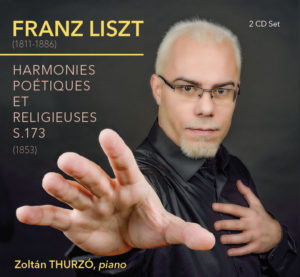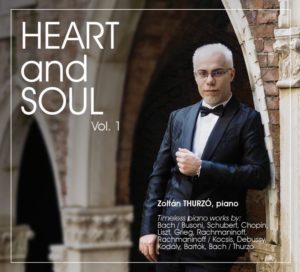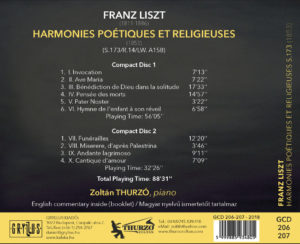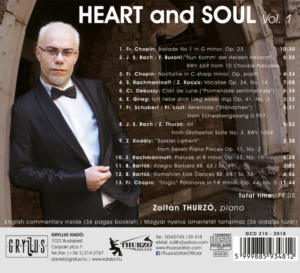Raising the musical life of Oradea to an international level
After the liberation from under the Ottoman reign, the year 1692 marked the development of Oradea and the Episcopacy brought in our city by Saint Ladislaus, not to mention the Cathedral’s, also.
We must not forget that the 32 years of Turkish occupation and the siege of the city almost struck down the Hungarian inhabitants. All-together, in Oradea remained intact two dozen homes.
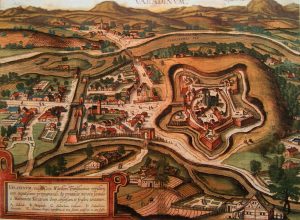 Bishop Benkovits Ágoston is the first to arrive in Oradea, in 1692. In those times, there was no Catholic Church in our city, as a consequence of the damage the Ottoman dominion accomplished. Once the Bishop arrived in our city, he ordered the construction of a Catholic Church for those barely two hundred believers. This will be our second Cathedral. It still exists nowadays, in the vicinity of the Reformed Church located on the Crisul Repede River’s bank (the Olosig Church), surrounded by flats – a church taken from the Roman Catholic Bishopric by the atheist Romanian communist leaders in 1944 and consigned to the Orthodox Church (…) so they took it in custody and use it to the present day (the first cathedral was destroyed in 1618 from the prince of Transylvania, Bethlen Gábor’s order, who also commanded constructors to use the stones from it to build up the walls of the city fortress. That is the story of the first Cathedral’s destruction.)
Bishop Benkovits Ágoston is the first to arrive in Oradea, in 1692. In those times, there was no Catholic Church in our city, as a consequence of the damage the Ottoman dominion accomplished. Once the Bishop arrived in our city, he ordered the construction of a Catholic Church for those barely two hundred believers. This will be our second Cathedral. It still exists nowadays, in the vicinity of the Reformed Church located on the Crisul Repede River’s bank (the Olosig Church), surrounded by flats – a church taken from the Roman Catholic Bishopric by the atheist Romanian communist leaders in 1944 and consigned to the Orthodox Church (…) so they took it in custody and use it to the present day (the first cathedral was destroyed in 1618 from the prince of Transylvania, Bethlen Gábor’s order, who also commanded constructors to use the stones from it to build up the walls of the city fortress. That is the story of the first Cathedral’s destruction.)
The fact is that with less money but willingly, Bishop Benkovits has built the cathedral with enthusiasm and faith in the future, and certainly hope that Oradea will grow to be, despite all happenings, an important centre of culture and architecture.
A centre of music
Soon after, Cardinal Imre Csáky built a new house of the Lord, the today’s parish church named after Saint Ladislaus (it became the third Cathedral in chronological order).
Judging from a different point of view, only decades after the departure of the Ottomans, almost all of the heads of the Church put all efforts into building up the cultural, but more important, musical life of Oradea, making out of this city one of the most important centres of Europe. In the hands of the Roman Catholic Bishop of the city have always laid significant financial resources, and they have known how to use it: they have always invested huge amounts of money into the physical and spiritual care of the believers, education, but they have always had resources to support Arts in the city.
The Baron Ádám Patachich
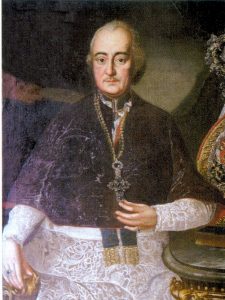 Baron Ádám Patachich was born in 1715. His father wanted his son to choose the the Army, instead he opted for literature and theology, and graduated with a diploma in Rome. He, regularly, wrote poems, a reason good enough for the people from Accademia Arcadia (Arkádok) in Rome to ask for his membership. In 1739, he arrives in Vienna where he becomes a diligent observer of cultural ideas and life. It is here where the thought of him becoming a Bishop will lead to the desire of building a courtyard of such beauty that it will gather around the most important people.
Baron Ádám Patachich was born in 1715. His father wanted his son to choose the the Army, instead he opted for literature and theology, and graduated with a diploma in Rome. He, regularly, wrote poems, a reason good enough for the people from Accademia Arcadia (Arkádok) in Rome to ask for his membership. In 1739, he arrives in Vienna where he becomes a diligent observer of cultural ideas and life. It is here where the thought of him becoming a Bishop will lead to the desire of building a courtyard of such beauty that it will gather around the most important people.
Ádám Patachich was appointed Bishop in the late 1759, but by time the bulla from Rome reached Vienna, his consecration was marked in calendars in 1760.
His predecessor was Bishop Count Pál Forgách and he was summoned to Vác in 1759 through a single royal letter; another one appointing the new bishop of Oradea was not officially issued. In order to prevent a malfunction in the Church’s proceedings, in such cases the priests choose one vicar from amongst themselves. (This so called “law” survived from ancient times, when they used it to elect their own bishop.)
Ádám Patachich was 45 years old when he was elected bishop of Oradea, in the spring of 1760. He was presented to the world on 25th of May on Whit Sunday.
The Artistic Life
He could not see too much of the city, because in 1660 the inhabitants fled from the Ottomans, in the fortress. Everyone et the homes on fire while the city bore the marks left by the war. Ádám Patachich is not only responsible for building the unique and imposing Baroque residence (under Maria Theresa of Austria, about 200 castles and palaces were built across Hungarian territory; the one built in Oradea was the largest of them all), but for the construction of the Baroque Cathedral also (which was started by Bishop Count Pál Forgách), not to mention that the golden epoch of the Artistic life of Oradea started with the arrival of the bishop interested in humanism.
The highly educated, in love with grandeur bishop managed to put, in a breath take, Oradea on the map of Arts. Imagine the sad picture that revealed in front of the new Bishop while he and his men were brought into the city in and adorned carriage: traces of wars and revolutions, i.e. a half-finished cathedral (the present Basilica – the fourth Cathedral) with uncoated walls, roofless and no tower.
But Patachich was no ordinary man; while he generously invested a quarter of its annual revenue in music and theatre, i.e. a huge library (which after his arrival in the city was opened to the public, as the public library), knew that this task – the development of music in Oradea – could only be solved by a young artist with an outstanding talent.
In one of the carriages in the back, bringing the bishop’s men, travelled a young man, 23 years of age, slightly thin, looking quite frail, yet bright-eyed and ambitious: he was Michael Haydn.

